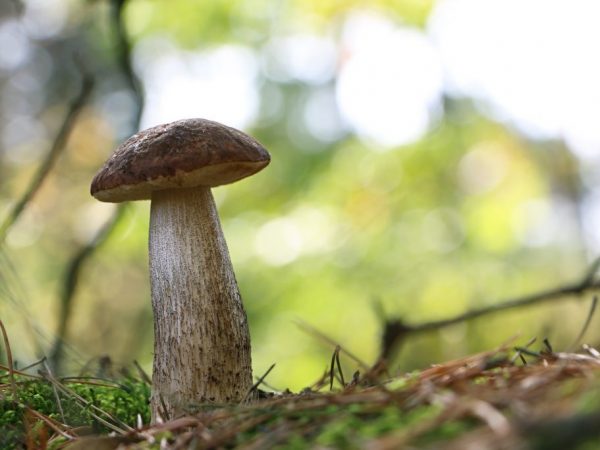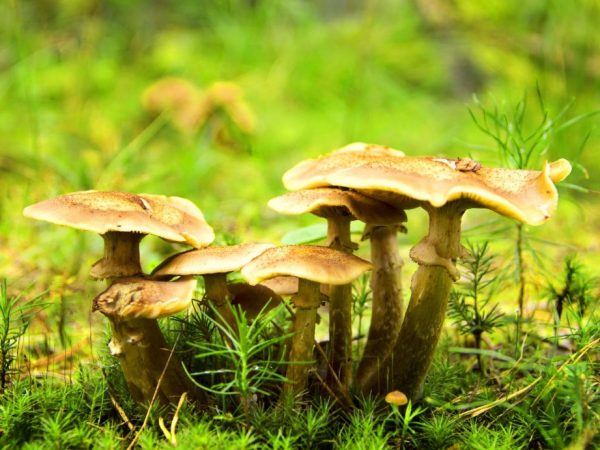Map of mushrooms in the Moscow region
In late July-early August and until the end of September, many mushrooms grow in the Moscow region. The season begins for whites, saffron milk caps, milk mushrooms and podgruzdkov, chanterelles and russula, volushek, butter mushrooms. In their search, the forests of the Moscow region are combed in a variety of ways by thousands of mushroom pickers.

Map of mushrooms in the Moscow region
Preparing for a mushroom hunt
Novice mushroom pickers often put false and poisonous mushrooms in baskets along with edible ones, so before going into the forest, be sure to read their description.
Before driving outside the city limits, it is important to prepare properly. You need to take sandwiches, water, a compass, harvest baskets, a knife. Be sure to wear rubber boots and clothes with long legs and sleeves. Take a first aid kit and a mushroom guide. The atlas helps to understand what exactly was collected in the basket. You need to take a phone with you with a fully charged battery and a refilled balance and if you have a navigator. You also need to warn your family and friends about where you are going and when you will return.
In order not to forget anything, they make a list of necessary things in advance. The calendar of the mushroom picker helps to find mushrooms in the Moscow region in a certain month.
They start picking mushrooms in the Moscow region early in the morning: at this time, the catch is easier to find by the caps shining in the dew. Harvests that have not warmed up under the sun's rays are stored longer.
During the rainy season, mushrooms deteriorate: they lose their taste and release poisons. Therefore, in such weather, it is better to postpone the hike and wait for the onset of hot days. Old and damaged copies cannot be taken. The collected ones must be immediately cleaned from the ground on the spot, and upon arrival home, put in salted cold water for a short time.
Mushroom calendar
The calendar shows which types of mushrooms are common in certain months. The forecast for 2019 is favorable, the first mushrooms have already appeared. The graph helps to calculate the direction for future hunting: it begins in the spring, when the first mushrooms appear in the Moscow region.
- April. In the April forests, it turns out to find only early species - morels and lines. The beginning of the "quiet hunt" season falls on the next month.
- May. The first mushrooms in May in the Moscow region are morels, which belong to the 3rd category of edibility. They are stewed and fried, but after a long soaking. When collecting morels, it is important to be careful not to confuse them with outwardly similar lines that belong to a different family. The most important spring mushrooms to eat are champignons, which are always in high demand.
- June. Summer mushrooms are the most delicious and valuable. The earliest are boletus. It is easy to find the first boletus in birch groves. Spikelets also appear in June. This is the name of the white birch mushroom, which bears fruit at the time of flowering rye. Appearing in June, spikelets grow until October. A common and popular summer mushroom is the boletus. It is known for its high taste. It is fried, stewed, boiled, added to pies as a filling.The most important thing for a mushroom picker is to find a porcini mushroom - a universal option for different dishes.
- July. This month begins the mushroom season for mushrooms in the Moscow region. They are dangerous fresh, they are soaked for a long time before pickling. Collecting milk mushrooms is complicated by the presence of their false poisonous counterparts. This month, the most colorful summer mushrooms make their way out of the ground: mushrooms and chanterelles. In July, there is still a veselka or a smelly morel. Its medicinal qualities are excellent and undeniable, but it is edible only in theory.
- August. The last month of summer is the most abundant for "quiet hunting". New species join the previous mushrooms: autumn mushrooms begin to grow on stumps and roots, waves appear under birches, and green and yellow russula caps appear on the sides of paths. More truffles are harvested at the end of summer. These are relatively rare mushrooms that grow in bright glades and forest edges.
- September-November. Autumn mushrooms - usually those that remained after the end of summer: boletus mushrooms, boletus mushrooms, whites, mushrooms and truffles near Moscow serve as tempting trophies for mushroom pickers.
- Winter. December - January - the time of appearance of winter mushrooms, which are usually fried or added to soups. Honey mushrooms are the latest among all mushrooms, which experienced "hunters" look for not only in trees, but also in their hollows.
The best places for "quiet hunting"

Moscow region is rich in mushrooms
The map of mushroom places in the Moscow region was compiled on the basis of many years of experience of mushroom pickers.
Yaroslavskoe
The best destination for picking mushrooms in the Moscow region is Yaroslavskoe. They are looking for mushrooms near the forest near the station "Pravda". Chanterelles and russula grow in abundance near the Pushkino station area. In the bog near the village of Sharapovo, porcini mushrooms and raspberries are found in hummocks.
After 5-10 km from the station, there are wonderful views: a lake, a waterfall with a recreation complex built next to it, a nice forest. Boletus boletus can be found in abundance there. This is the best mushroom place in the Moscow region.
Another good place is near the Pushkin District. This is the Sofrino station, where mushroom pickers get by train from the Yaroslavsky railway station. Porcini and other lamellar mushrooms grow there.
Kursk
Kursk direction - these are the stations "Grivno" and "Kolkhoznoye". They get there from the Kursk railway station in Moscow. To the east of “Hryvno” they are looking for aspen, boletus and other tubular mushrooms. Here a lot of chanterelles and boletus adored by many mushroom pickers grows.
Having reached the Kolkhoznaya station, they go to the east, to the village of Nikonovo, or to the west, to Panino. This area is characterized by nigella, boletus and chanterelles, but usually it is possible to collect other types of mushrooms.
Ryazanskoe
The Ryazan direction is highlighted on the mushroom map for the Moscow region. This is a good start for the quiet hunt in 2019. There are forests 5 km from the Bronnitsa station. Good places are located 3-4 km from the railway from the Faustovo station and the 63 km platform.
Mushroom pickers from the Moscow region know about the wonderful pine forest, which they get from the Chornaya station. Chanterelles, boletus and unusual pigs grow here, although the latter are dangerous to collect: they absorb toxins.
If you go to the north of the station "Lukhovitsy", you will find yourself in a forest where delicious mushrooms of the Moscow region grow - boletus and boletus.
Kazanskoe
The Kazan direction is one of the most profitable. Boletus and boletus are found 2 km from the Lukhovitsy station. Porcini mushrooms and boletus grow well in a forest 1.5 km from the Chornaya station. Honey mushrooms are collected 3-4 km from the station "Platform 63 km". Usually a mushroom picker gets to one of these places by taking the train at the Kazan station in Moscow.
Gorkovskoe
The Gorky direction differs in that it is located farthest from Moscow. You need to go to the Fryazino station or to the 61 km platform. In the first case, you should go south, beyond the village of Vsevolodovo. From the platform "61 km" it is worth going to the north - only 2 km to the desired forest area - or to go 5 km to the south.
Dangerous mushrooms
The most dangerous mushrooms in the Moscow region are pale toadstool, fly agaric, satanic mushroom and false milk mushrooms.
- Death cap: looks like a mushroom. Accidental consumption of this deadly fungus in food affects after a few hours or even days.
- Amanita: belongs to psilocybin mushrooms. It contains hallucinogenic substances. His cap is red or green, with white dots. Hallucinogenic mushrooms cause delusions, paranoia, auditory and visual distortions.
- False milk mushrooms: they are difficult to distinguish from the real ones. Their main feature is a strong camphor or coconut smell. They cause dehydration and diarrhea.
- Satanic mushroom, or satanic sick: by its names alone, it makes a person wary. It is often mistaken for a porcini mushroom. In his youth, he has a flat hat, which gradually takes on a convex shape. The color is gray or light green. At the break, the pulp has a bluish tint.
Irina Selyutina (Biologist):
The porcini mushroom has two counterparts: the gall mushroom and the satanic one. The satanic pain is characterized by the following features:
- Hat: it seems velvety to the touch, its color depends on the place of growth and illumination;
- Hymenophore: tubular, orange or different shades of red;
- Leg: the carmine color of its mesh layer in the middle part;
- Pulp (white or yellow): the color on the cut changes after 3-5 minutes and becomes blue (purple).
Attention! Check the color change immediately at the collection point. It may not work at home.
Please note! The most dangerous is poisoning with a raw satanic mushroom, which can be confused with white and can be used in this form for salads.
Champignons, oyster mushrooms or kombucha are delicious and can be grown by yourself. A farm with year-round harvests is great, but not everyone has the place and time to care for a growing crop.
Conclusion
Mushroom picking in the forest does not require basements, balconies and summer cottages. It is a pleasure, especially if you know where the best mushroom spots of the Moscow region are.


